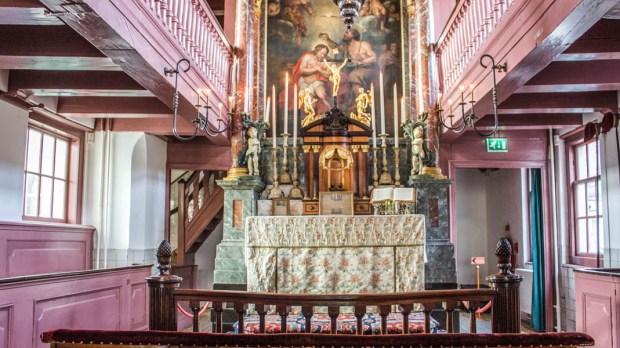Lenten Campaign 2025
This content is free of charge, as are all our articles.
Support us with a donation that is tax-deductible and enable us to continue to reach millions of readers.
An important monument to the history of the persecution of Catholics has been saved in the city of Amsterdam in the Netherlands.
The Museum Ons’ Lieve Heer op Solder (“Our Lord in the Attic”) commemorates a space built in 1663 so Catholics who were barred from celebrating Mass in public in Reformation-era Amsterdam could practice their faith clandestinely.
Over 16,000 people signed a petition calling for the museum to remain open after the Amsterdam Art Fund announced that it was eliminating the church’s €600,000 annual subsidy. The city’s arts and culture councilor then overruled the arts commission’s decision, ensuring that the church, which attracts over 100,000 tourists a year, will continue to operate as a museum.
The Tablet reported that Bishop Jan Hendriks of Haarlem-Amsterdam said: “This is a beautiful and valuable monument of Catholic history. That history of discrimination and persecution for faith, which also took place in our country, is still topical.”
The church is an example of a “schuilkerk” or “clandestine church” established after Catholics lost the right to worship in public. It was built on the upper floors of a merchant’s house, and could hold as many as 150 worshipers.
Religious freedom was restored to Catholics in 1853, and the secret house church became a museum in 1888 with the opening of the larger St. Nicholas Basilica nearby.
Visitors enter the church through an underground tunnel, walk through the house’s living quarters, and then climb a narrow staircase to reach the chapel. A separate Lady chapel, sacristy and confessional are also located on the upper floors of the house.
The museum is open Monday to Saturday from 10 a.m. to 6 p.m. and Sundays from 1 p.m. to 6 p.m. Visit the website for tickets and to learn about the museum’s coronavirus protocol.

